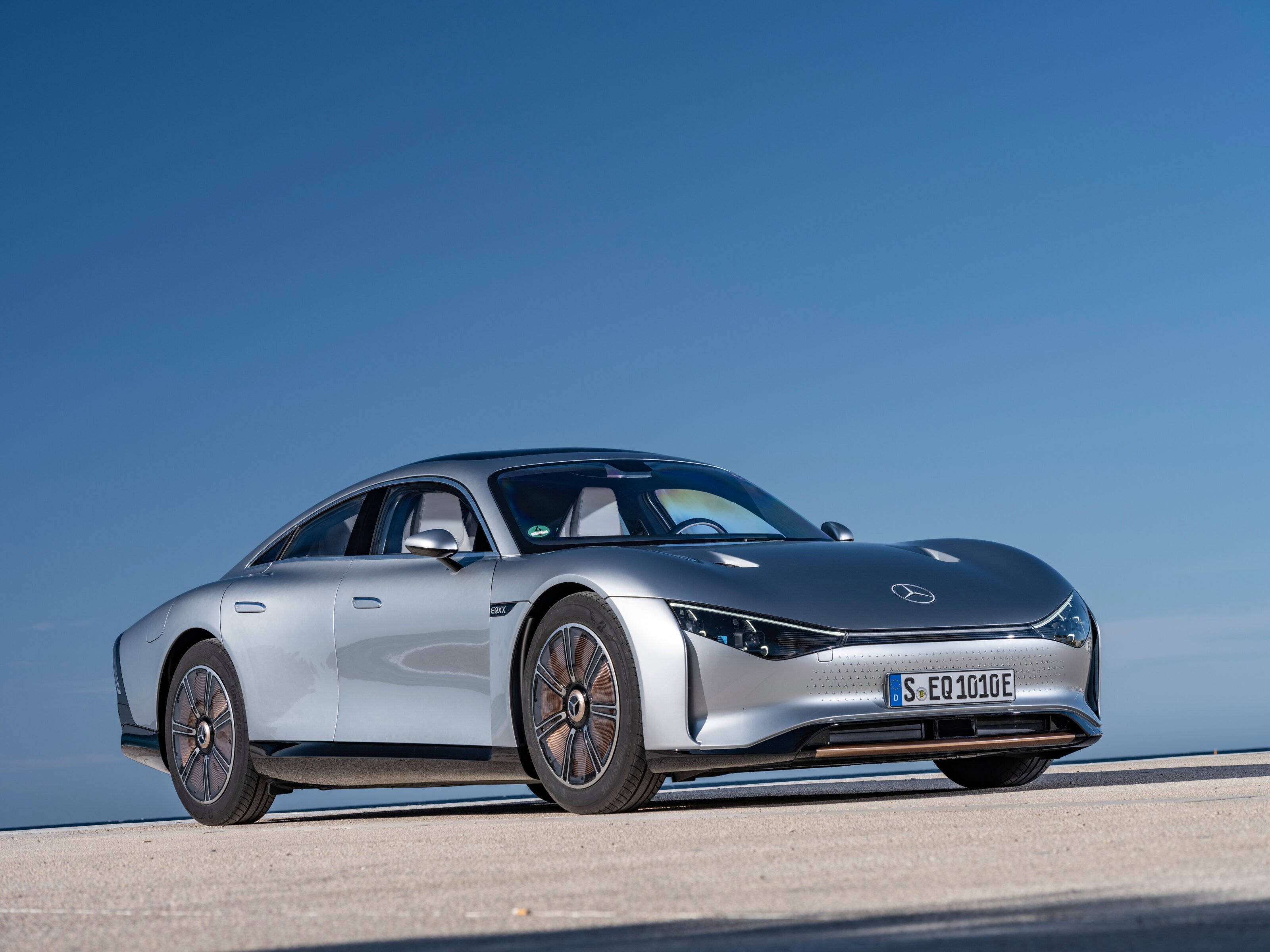The Mercedes EQXX concept averaged 87.4km/h over a 1006km run from Stuttgart to Nice on a single battery charge with 140km of range still remaining.
At a notarised 8.7kWh/100km, it is now the world’s most efficient EV – but these truly amazing results were partly achieved at the expense of classic brand values like space, comfort, luxury and prestige.
The EQXX is low and narrow, an arc-shaped, tight-fitting bumper to bumper compromise that wears its once-proud brand logo as an inconspicuous 2D sticker on the functionless bonnet. True, this concept car was not conceived to mimic your father’s sumptuous all-in Benz.
Instead, this very special one-off Mercedes was from the beginning conceived as a radical mould-breaker detached from the marque’s illustrious past and present. Its concept was, after all, compromised for a reason, namely to use as little electric energy as possible over the longest achievable range at a reasonably inspired average speed.
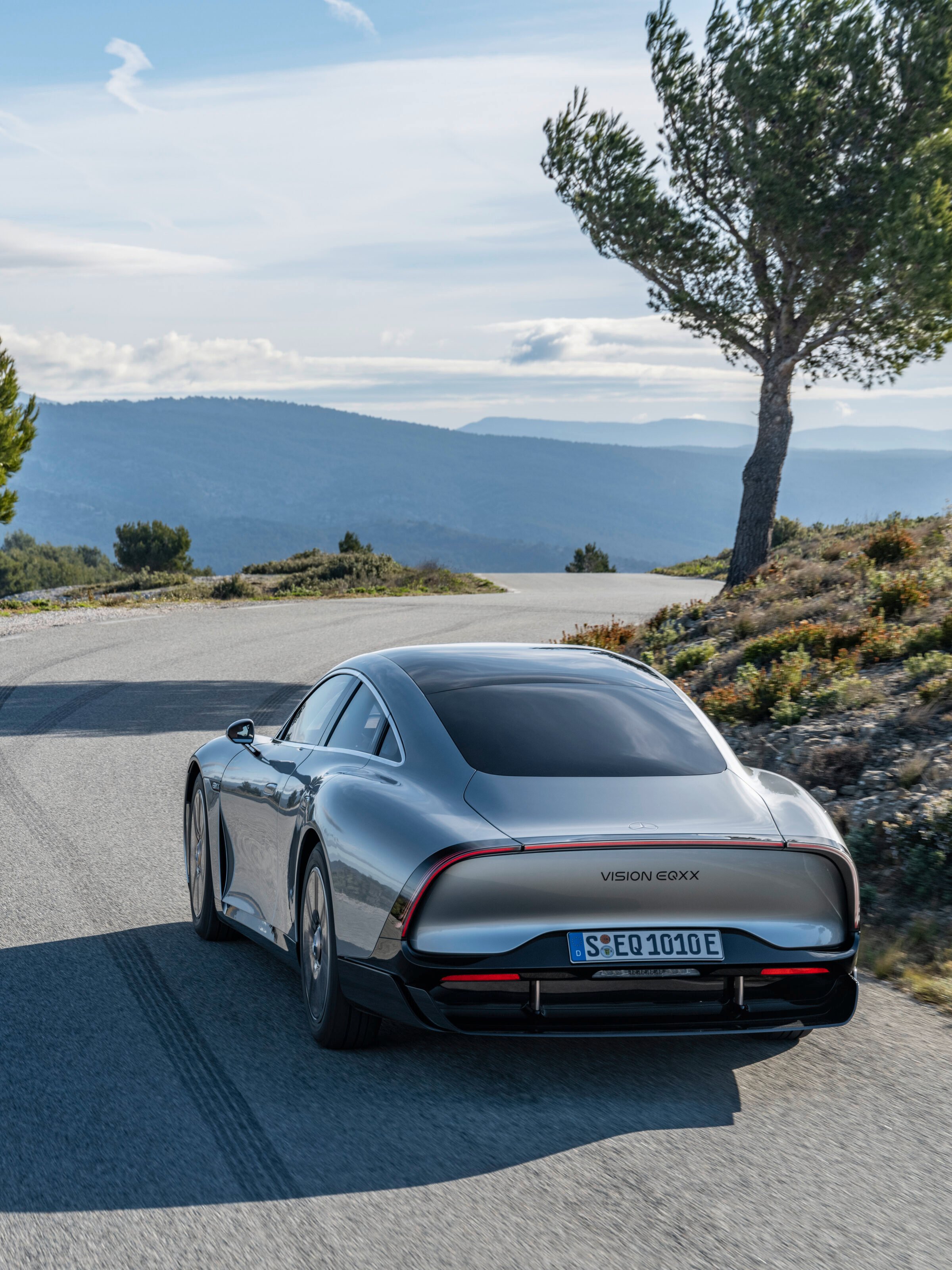
Mission accomplished? The numbers do speak for themselves. Covering in excess of 1000km between two charges should squash range anxiety once and for all, just as under 10kWh/100km of electric consumption marks a new efficiency record for a four-seater EV voluntarily limited to 140km/h.
But make no mistake – these achievements come at a price. Like a distinct shortage of head- and legroom for all occupants, arduous entry and exit, difficult manoeuvrability in tight spaces, and poor rear visibility despite camera-operated mirrors.
The design is functional to the extreme, not unlike previous aero pace-setters such as the GM EV1, VW XL1 or McLaren Speedtail. Except that the Mercedes has four front-hinged doors, four thinly padded bucket seats and a sensationally low drag coefficient of 0.17 supported by an equally radical frontal area of 2.12 square metres.
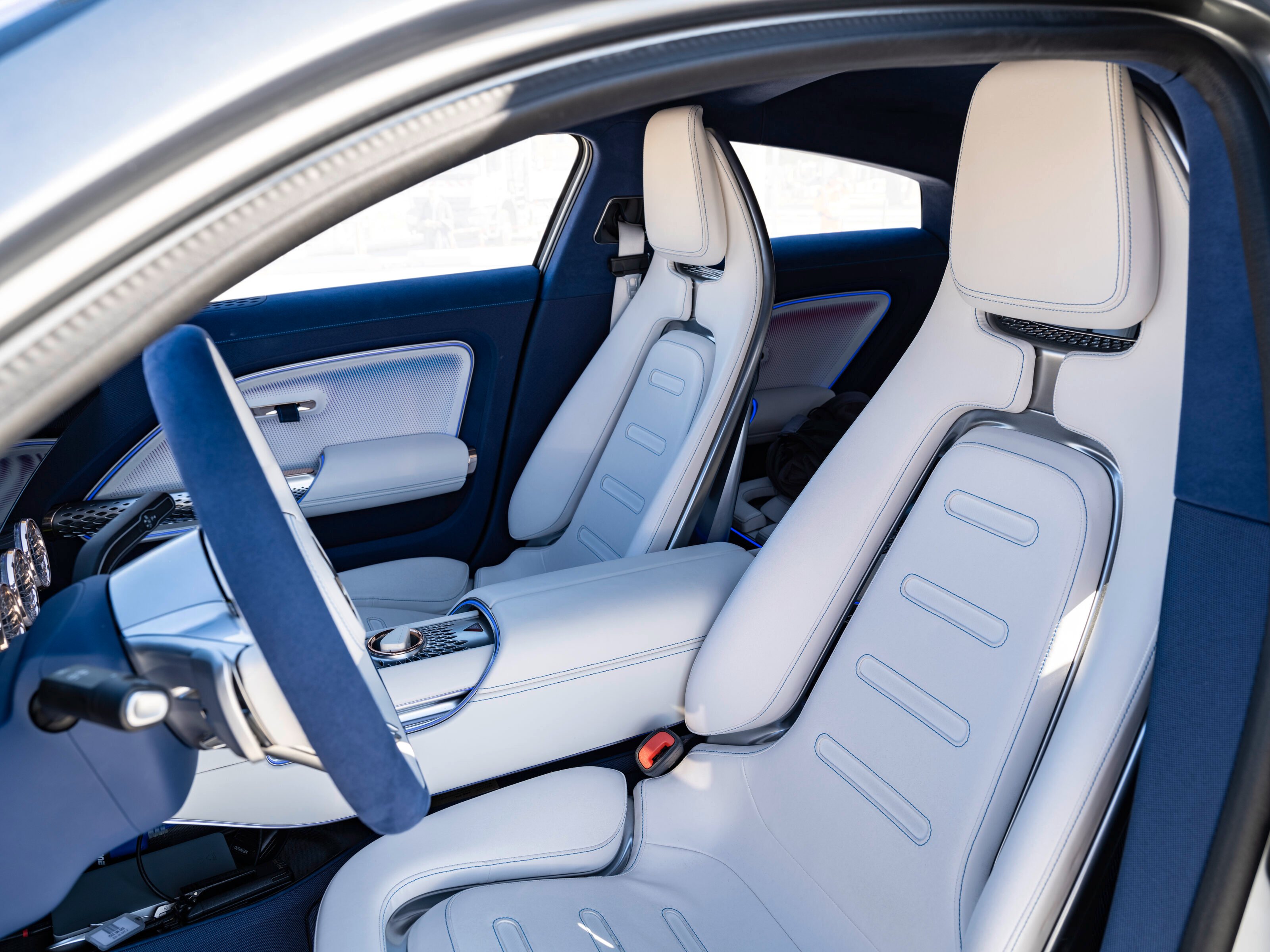
Its roof and the rear window are tiled with 117 solar cells that add up to 25km of extra range on a sunny day. The 20-inch composite wheels are shod with 185/65 low rolling resistance Bridgestone Turanza Evo tyres. An adaptive air flow control system governs a set of concealed nasal curtains and breathers as well as the motorised rear diffuser, which drops at speed.
Thanks to the more potent 900V system, air-cooled highly siliceous anodes and 100kWh of battery power, the EQXX drive unit boasts an energy density of 400Wh/L, thereby eclipsing even the previously untouchable EQS. Credit is also due to the battery pack of the concept car, which is 30 per cent lighter and 50 per cent smaller than the equally powerful counterpart fitted to the electric S-Class.
A highly complex multi-stage cooling system keeps the temperature-sensitive elements inside a narrow best-point window at all times. The bionic-inspired body architecture and a mix of lightweight materials ensure a commendably low kerb weight of 1750kg.
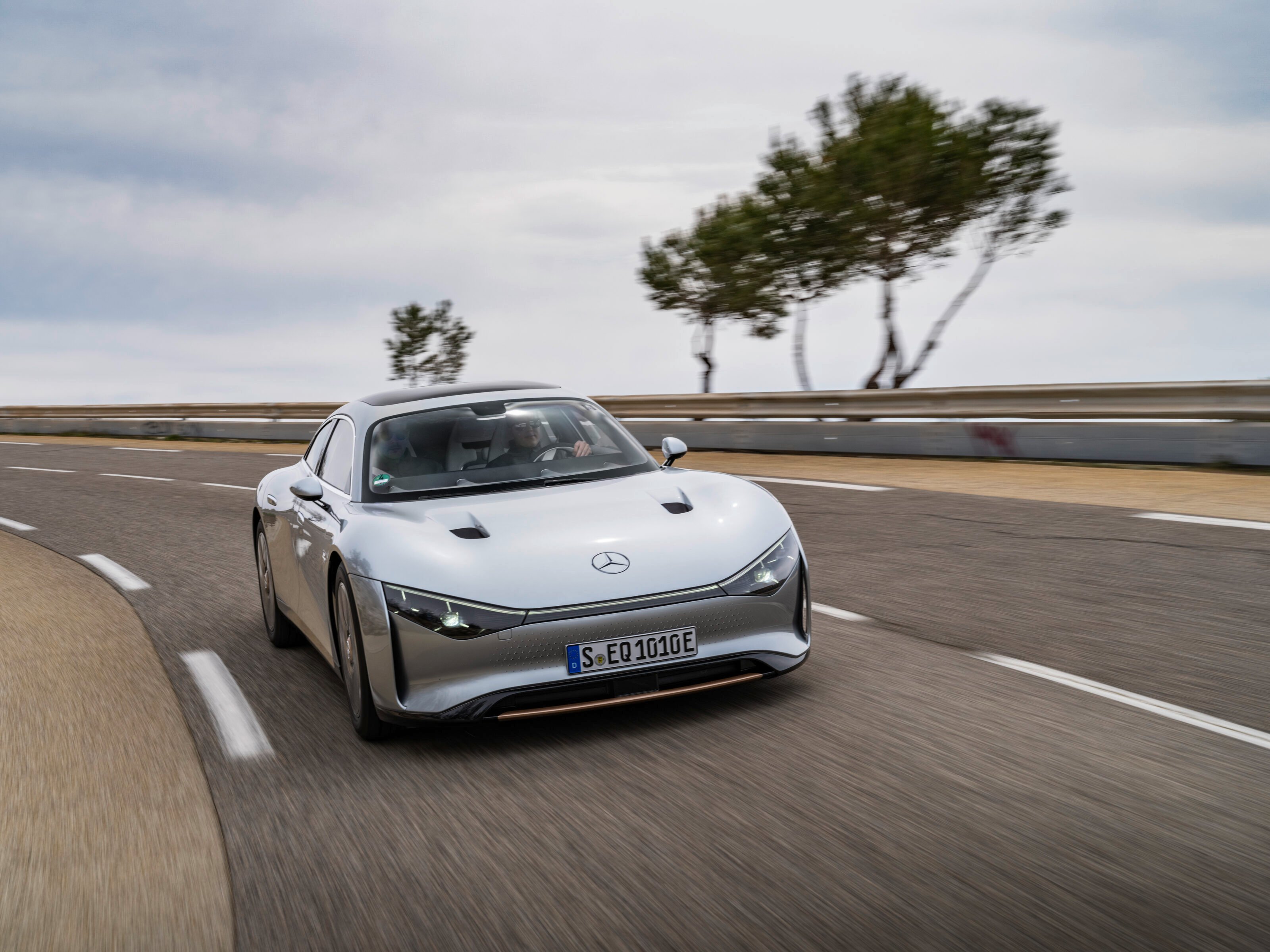
At 4977mm, the EQXX is slightly longer than the EQE but its 2800mm wheelbase is substantially shorter, the 1870mm width is about level with the A-Class, the tapered plan view creates a unique footprint and the low-flying 1350mm height matching the new SL.
The electric motor was developed in cooperation with Mercedes-AMG High Performance Powertrains (HPP), the company’s own F1 powerbrokers based in Brixworth, UK. It develops a peak 183kW and a constantly available 152kW. The energy regeneration system can be locked in four positions by a pair of conveniently positioned shift paddles.
No torque and acceleration data is available at this point, but we know that the drive unit operates the rear wheels via a single-speed transmission. Charging is by DC only at up to 120kW. Bunkering electricity for the next 320km takes a smidgeon over 15 minutes.
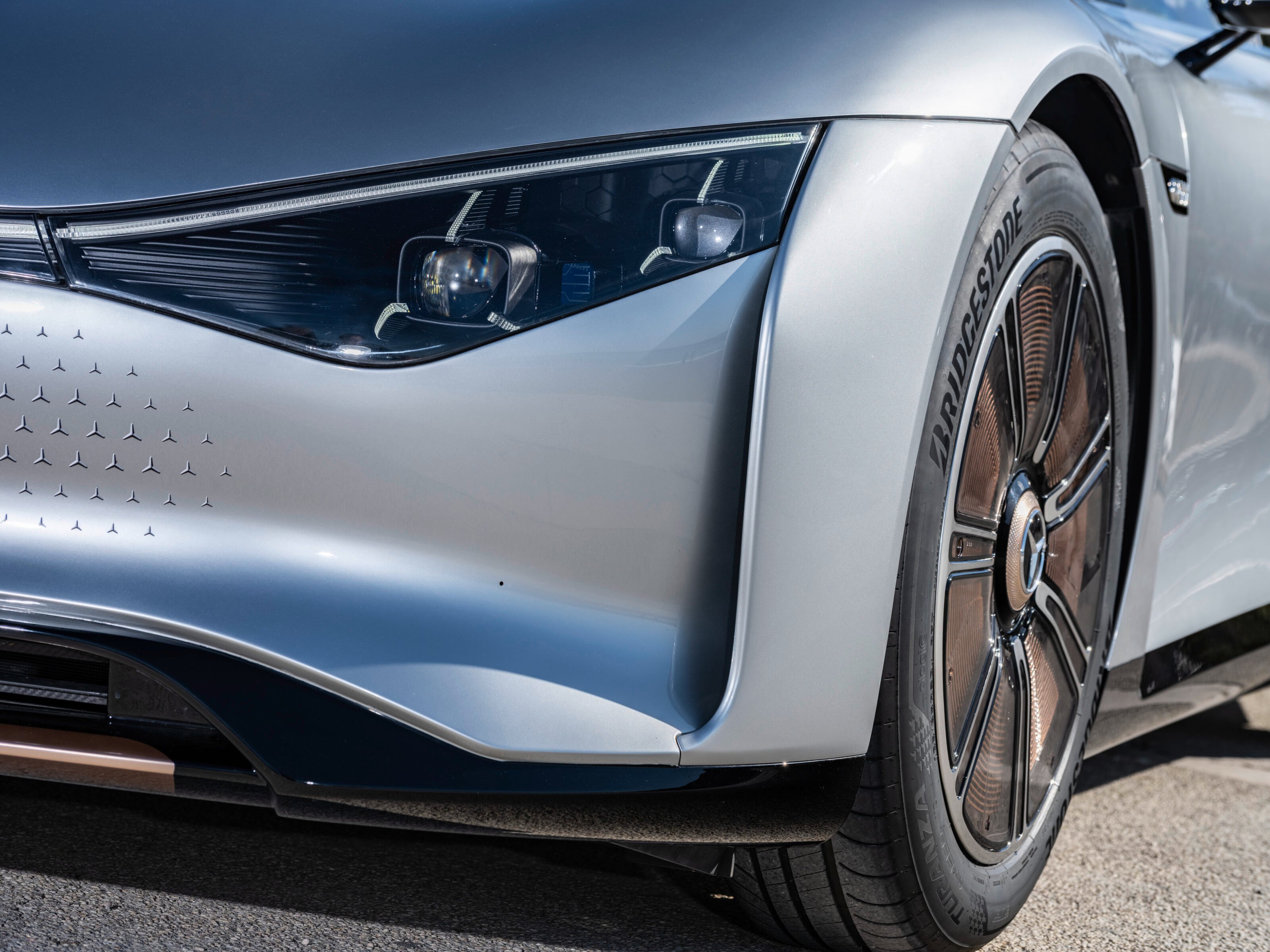
A major difference between EQXX and the EQS equipped with a nominally identical battery is the dramatically reduced energy consumption. The key game changer is the more potent, more heat-resistant and more efficient performance electronics.
The EQXX previews the next-generation MMA models in more ways than one. As a reminder, MMA is an acronym for the new electric-first Modular Mercedes Architecture that underpins the future A-Class family as well as the zero-emission C-Class, starting in 2024.
Commonalities include the extended, aerodynamically more efficient rear end with sharp tear-off edge, different track widths front and rear for that coveted teardrop effect, an active multi-level cooling system channelled above, past and below the battery pack, flush-fitting mirrors, windows and door handles, and the new trademark EV front end featuring matrix headlights, an LED crossbeam, full-width star-pattern graphics and not the faintest trace of a conventional radiator grille.
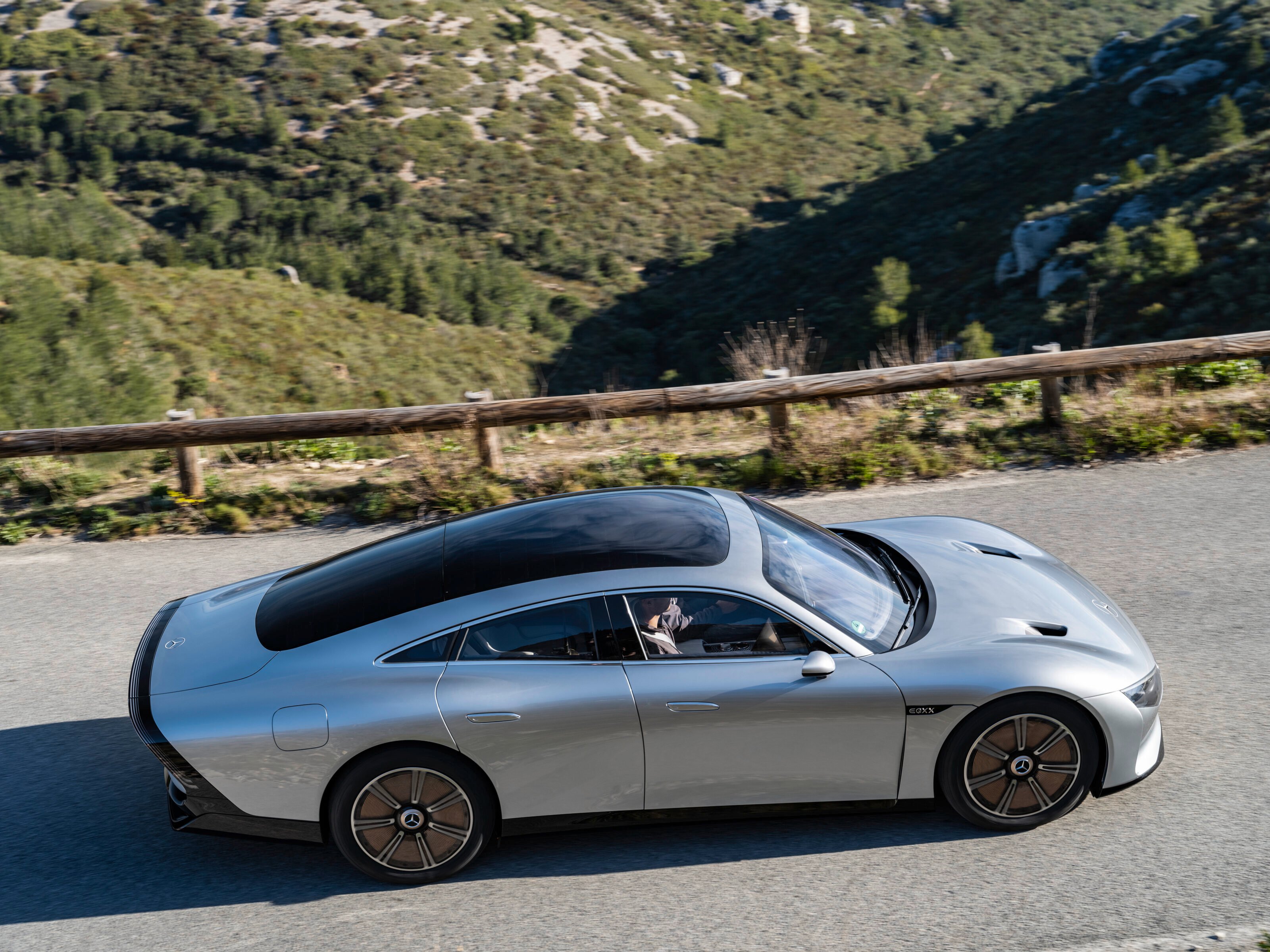
Inside, we expect a choice of cockpit treatments ranging from a straightforward single-unit display to a full-width second-generation hyperscreen.
The EQXX was equipped with a 47.5-inch touchscreen powered by 3100 individually controllable LEDs for a choice of cinema display, virtual trim selection, variable mood lighting and full data overkill.
Tomorrow’s Mercedes design follows two distinctly different aesthetic and functional routes. The low- to standard-height models are going to stick to the drag-cutting theme set by the EQXX concept car, which did exceptionally well in the wind tunnel.
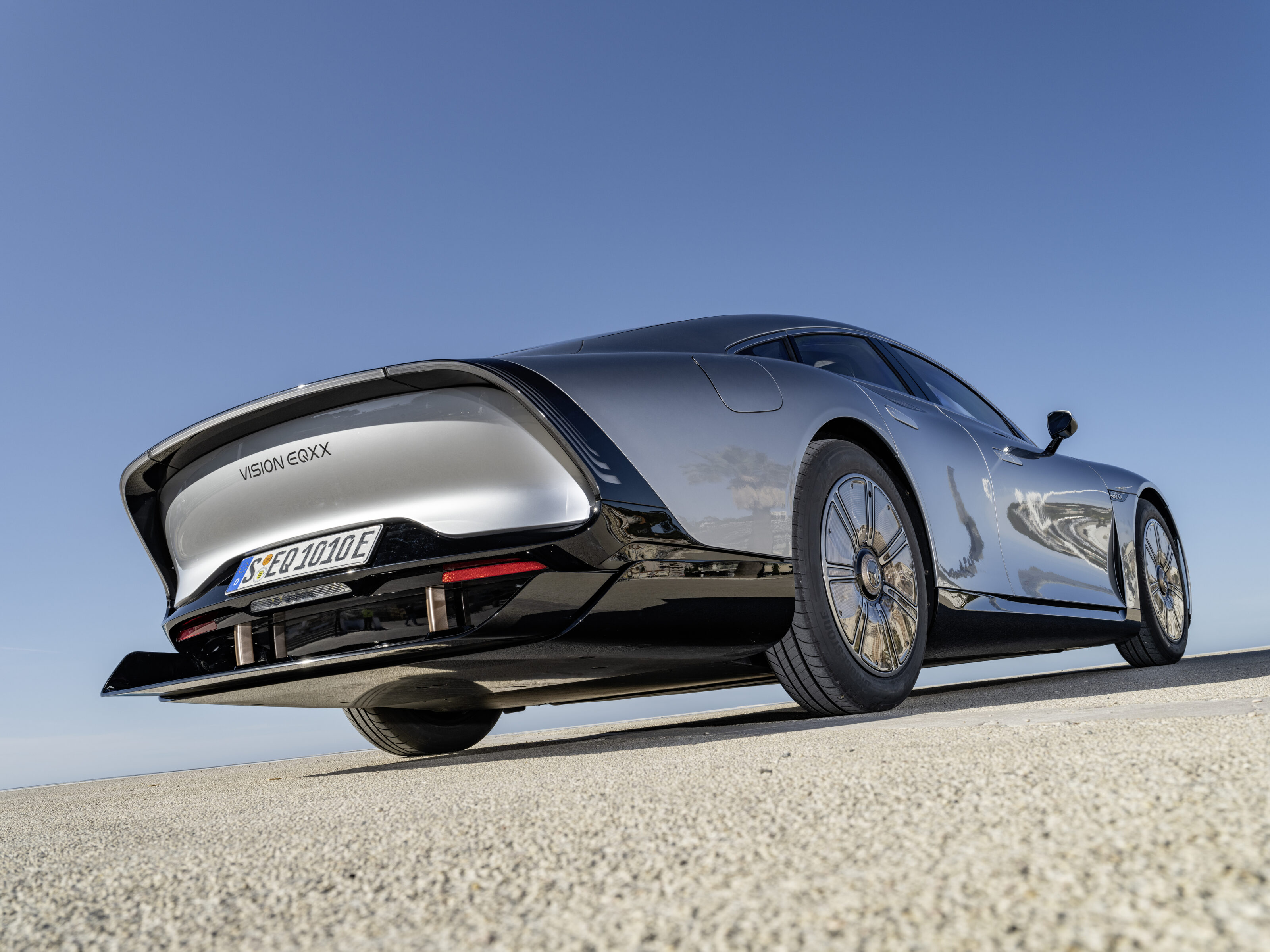
Less extreme variations of this aero approach are to be fielded by mid- to full-height crossovers and SUVs that trade a somewhat larger frontal area for notably more generous packaging solutions.
In the course of this transformation process, classic design features like the upright grille, the prominent three-pointed 3D star and the fixed light units are going to morph into a selective pre-set or on-demand orchestration.
In the works are large freely programmable surface sections designated to act as differentiators between models and model ranges, and as communication interfaces with other road users. These displays can relay different moods and intentions from festive and ornamental to sporty and dynamic.
There is no doubt about it: the future is electric in more ways than one.
We recommend
-
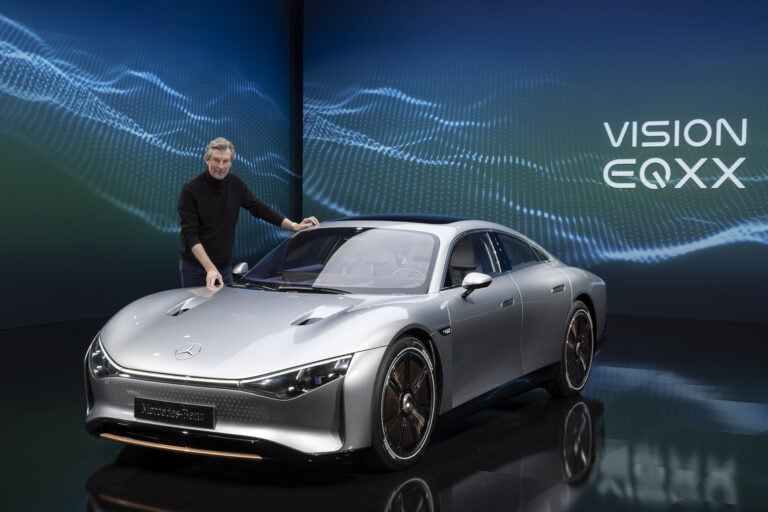 News
News2022 Mercedes-Benz EQXX: Reinventing the electric car
The Vision EQXX may well prove one of the most consequential concept cars of the early 21st century
-
 News
NewsMercedes-Benz EQXX EV travels 1000km on a single charge
Benz's slippery electric research prototype has set an efficiency benchmark thanks to technology that is set to work its way into the company's new EVs
-
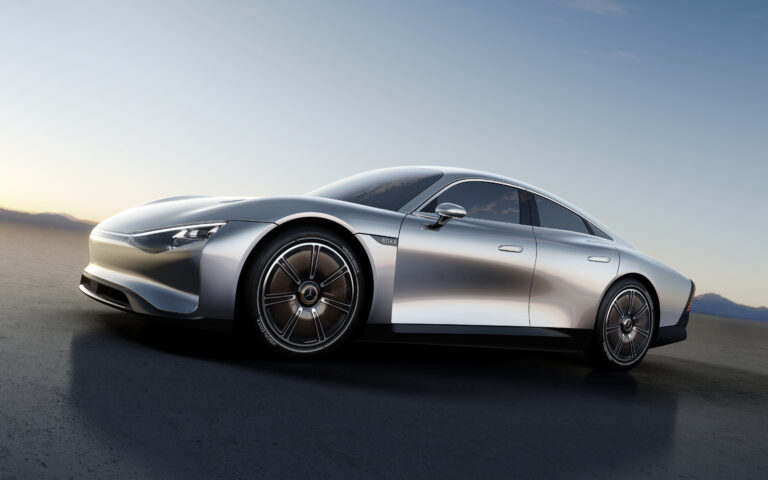 Features
FeaturesDetailed: The groundbreaking Mercedes-Benz EQXX concept
Merc’s Vision EQXX concept breaks new ground in terms of EV efficiency. But will that equal desirability? We dig under the slippery skin

